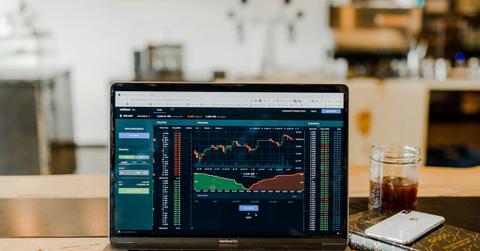Real-Time Markets: Exploring the Technology Behind Live Data Streams and Instant Transactions in the Digital Economy

Oct. 1 2025, Published 1:30 a.m. ET
The digital economy, a sprawling ecosystem of interconnected platforms and services, thrives on immediacy. In this fast-paced environment, the concept of "real-time markets" has moved from a niche financial term to a pervasive reality, underpinning everything from global stock exchanges to local delivery services. Real-time markets are characterized by the continuous, instantaneous flow of data and the immediate execution of transactions, enabling decisions and actions to occur within milliseconds. This article delves into the technological backbone that makes these dynamic markets possible, examining the intricate systems that power live data streams and facilitate instant financial movements, fundamentally reshaping how businesses operate and consumers interact in the digital age.
At its heart, a real-time market is an environment where information is generated, transmitted, processed, and acted upon almost instantaneously. This stands in stark contrast to traditional markets, which often relied on batch processing or periodic updates. The shift towards real-time has been driven by several factors, including increasing computational power, advances in network infrastructure, and a growing consumer expectation for immediate gratification. From tracking the price fluctuations of a cryptocurrency to monitoring the live score of a cricket match, or engaging in a multi-player online game, the digital economy demands a constant, unwavering pulse of up-to-the-second informatio
The foundation of any real-time market is its ability to generate and consume live data streams. These streams are continuous flows of data, often massive in volume, that capture events as they happen. In financial markets, these could be tick-by-tick price updates for stocks, bonds, or foreign exchange. In the realm of sports, it involves live scores, player statistics, and event outcomes. For online gaming platforms, it's the constant exchange of player actions, game state updates, and result calculations. The technology behind these streams is complex, involving sophisticated data ingestion pipelines, low-latency messaging systems, and high-throughput databases capable of handling enormous volumes of information without delay. Data sources can range from sensor networks and trading terminals to social media feeds and broadcast signals, all aggregated and normalized for consumption by various applications.
Coupled with live data streams is the imperative for instant transactions. What good is knowing the exact moment to buy or sell if the transaction cannot be executed immediately? Instant transactions refer to the ability to complete a financial exchange—such as a payment, a trade, or a bet settlement—within seconds, or even fractions of a second. This requires robust, secure, and highly efficient payment gateways and settlement systems. Traditional banking systems, designed for batch processing, often struggle with this demand, leading to the rise of specialized payment processors, digital wallets, and increasingly, blockchain and distributed ledger technologies (DLTs) that offer near-instantaneous, verifiable transactions. The integration of these payment mechanisms directly into market platforms ensures that the financial outcome of a real-time event is settled without perceptible delay.
The technological stack enabling these capabilities is multi-layered and sophisticated. Low-latency network infrastructure forms the bedrock. The advent of 5G wireless technology and the continued expansion of high-speed fiber optic networks are crucial, minimizing the time it takes for data to travel between points. Edge computing, which brings computation and data storage closer to the data sources, further reduces latency by processing information locally before sending it to centralized clouds. Cloud computing platforms provide the necessary scalability and global reach, allowing real-time systems to handle fluctuating loads and serve users across different geographical locations without significant performance degradation. These platforms offer on-demand resources, ensuring that spikes in data traffic or transaction volumes can be managed seamlessly.
Big data analytics and artificial intelligence (AI) and machine learning (ML) play a critical role in extracting value from these torrents of live data. Real-time analytics engines can process incoming data streams to identify patterns, detect anomalies, predict future trends, and trigger automated actions. For instance, in financial trading, AI algorithms can analyze market sentiment from news feeds and social media in real-time to inform trading decisions. In fraud detection, ML models can flag suspicious transactions as they occur, preventing financial losses. These technologies not only help in making sense of the data but also in automating responses, which is essential for the speed demanded by real-time markets.
Application Programming Interfaces (APIs) serve as the crucial connectors in this ecosystem. They allow different software applications to communicate and exchange data seamlessly. A modern real-time market is rarely a monolithic system; instead, it's an aggregation of various services—data providers, payment processors, analytics engines, user interfaces—all interacting through APIs. Streaming protocols like WebSockets or MQTT are specifically designed for persistent, bidirectional communication, ensuring that data can be pushed from servers to clients as soon as it becomes available, rather than requiring clients to constantly poll for updates. This "push" model is fundamental to maintaining the immediacy of real-time data streams.
The applications of real-time market technologies span a vast array of industries, transforming traditional operations and fostering new digital experiences. In financial markets, high-frequency trading (HFT) firms rely entirely on real-time data and ultra-low-latency execution to gain a competitive edge, often making thousands of trades per second. Algorithmic trading, driven by complex models, constantly monitors market conditions to execute orders automatically. The foreign exchange market, operating 24/7 globally, is another prime example of a real-time environment where currency prices fluctuate second by second, demanding immediate response capabilities.
E-commerce and retail have also embraced real-time dynamics. Dynamic pricing models adjust product prices based on demand, competitor activity, and inventory levels in real-time, optimizing sales and revenue. Inventory management systems update stock levels instantaneously as purchases are made, preventing overselling and improving supply chain efficiency. Personalized recommendation engines, powered by real-time user behavior data, suggest products and services instantly, enhancing the shopping experience and driving conversions.
Perhaps one of the most visible and rapidly growing sectors benefiting from real-time technologies is online gaming and entertainment. Platforms offering live casino games, online poker, and sports betting are entirely dependent on instantaneous data and transactions. Consider the popularity of games like Teen Patti tpmaster.in Sweet or the widespread use of platforms accessed via a teen patti star apk. These digital card games require real-time updates of game state, player actions, and immediate calculation of results to maintain player engagement and fairness. Similarly, live casino experiences, such as the widely popular Crazy Time, depend on high-definition video streams, real-time random number generation, and instant display of results to create an immersive and trustworthy environment. When a player wins, the payout must be processed and reflected in their account balance immediately, a testament to the seamless integration of live data streams with instant transaction capabilities.
Sports data and betting exchanges offer another compelling illustration. The Vijay Hazare Trophy 2021 points table, for instance, along with live match scores, player statistics, and other event data, is a critical input for sports betting platforms. Betting exchange live services allow users to place bets against each other, with odds fluctuating in real-time based on game events and betting patterns. These platforms must ingest vast amounts of live sports data, process it, update odds, and settle bets instantly as events unfold. A slight delay in data transmission or transaction execution could lead to significant financial discrepancies or a poor user experience. Fantasy sports, too, thrive on real-time statistics, updating user teams and scores as games progress.
Beyond these consumer-facing applications, real-time markets are crucial in logistics and supply chain management. Real-time tracking of goods, vehicles, and shipments provides immediate visibility into the supply chain, allowing for optimized routes, proactive issue resolution, and accurate delivery estimates. In the realm of the Internet of Things (IoT) and smart cities, countless sensors generate continuous streams of data—from traffic patterns and air quality to energy consumption—which are processed in real-time to manage urban infrastructure, improve public services, and respond to emergencies.
Despite their transformative power, real-time markets face several ongoing challenges. Latency remains a perpetual battle; while systems strive for milliseconds, even tiny delays can have significant impacts, especially in high-stakes environments like financial trading. Scalability is another critical concern, as platforms must be able to handle sudden, massive surges in data and transaction volumes without faltering. Security is paramount, as instant transactions create new vulnerabilities for fraud and cyberattacks, necessitating advanced encryption, authentication, and real-time fraud detection systems. Regulatory compliance is also complex, particularly in global markets or highly regulated industries like finance and betting, where laws around data privacy, transaction transparency, and consumer protection must be adhered to in real-time.

Looking ahead, the evolution of real-time markets will continue to be driven by advancements in technology. Further integration of AI and machine learning will lead to more sophisticated predictive analytics, autonomous decision-making, and personalized experiences. The development of quantum computing, while still in its nascent stages, promises to revolutionize processing power, potentially enabling calculations that are currently impossible within real-time constraints. Web3 technologies, with their emphasis on decentralization and tokenization, could introduce new paradigms for real-time asset exchange and market governance, further democratizing access and reducing reliance on centralized intermediaries.
In conclusion, real-time markets are not merely a feature of the digital economy; they are its very pulse. The sophisticated interplay of live data streams, instant transaction capabilities, and the underlying technological infrastructure—from low-latency networks and cloud computing to AI-powered analytics and robust APIs—has fundamentally reshaped industries and consumer expectations. From the rapid-fire trades of Wall Street to the immersive experiences of online gaming platforms, and the dynamic world of sports betting, real-time dynamics demand and enable immediate action. As technology continues to advance, these markets will only become faster, more intelligent, and more integrated into every facet of our digital lives, driving unprecedented levels of efficiency, innovation, and interconnectedness in the global economy.
The information provided in this article is for general informational purposes only. Gamble or play responsibly. If you or someone you know has a gambling problem, help is available. Call 1-800-GAMBLER. If you’re in the U.K. and need help with a gambling problem, call the National Gambling Helpline on 0808 8020 133 or go to gamstop.co.uk to be excluded from all UK-regulated gambling websites. We disclaim any liability for any loss or damage arising directly or indirectly from the use of, or reliance on, the information presented.


